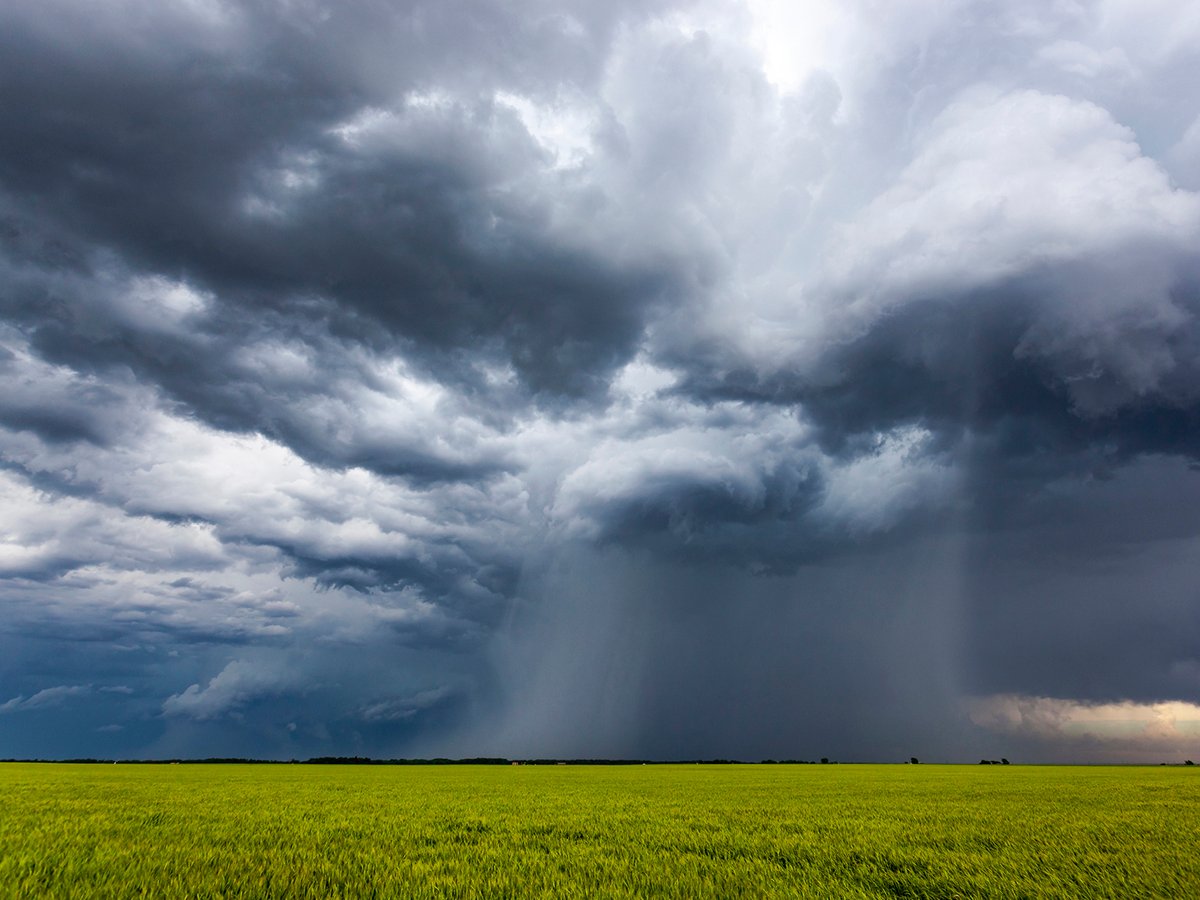GULL LAKE, Sask. – Standing at the base of one of two mammoth Sask Power wind turbines on his farm, Mike Magee’s face and hands turn red within seconds from the high windchill.
“The wind really blows out here,” said Magee, speculating that the lay of the rolling hills near Gull Lake contributes to constant wind that makes this one of the windiest places in Saskatchewan.
Wind represents green energy to Sask-Power and lease revenue to Magee.
The lease arrangement is similar to seven leases Magee has with oil and gas companies on the 25 quarters he and his brother use to produce grain and cattle.
Read Also

Extreme rain increases as planet warms
In this issue, we are going to wrap up our look at extreme rainfall by examining the different weather patterns that tend to be associated with these rainfall events.
The revenue adds income and value to the farm, which Magee also supports with various off-farm jobs.
He is pleased with the arrangement, saying SaskPower is fair and good to work with. On this day, the company’s technicians were checking controls inside and outside the towers.
Magee noted one tower was erected last summer in the same spot that a private company erected a test tower a decade earlier.
He sees no downside to the free-standing white turbines in his durum and grassland.
Magee said more should be built.
“If they can shut down one coal plant, they’re a bonus to the environment and to the future,” he said. “It’s the best thing since Christmas.”
Magee said he can farm within a metre of them.
As well, there are no overhead wires or underground fuel or pipes that could explode, leak or be left behind to contaminate the ground.
The power from each turbine goes underground to a central substation, then overhead to a power grid. These turbines must be located in close proximity to high voltage power lines.
The sleek towers emit a faint swishing sound, audible only when standing near them. A red light at the top is visible in the night sky to alert low-flying planes.
While oil wells eventually dry up, Magee said wind is a constant on his farm.
However, Tim Zulkowski, a senior engineer with SaskPower, said wind is only an intermittent source of power.
“We have to have backup sources,” he said.
Turbines shut down when wind falls below 15 km-h or rises above 90 km-h.
At peak capacity SaskPower extracts 17 megawatts of power from 26 wind turbines, with each $1.2 million turbine generating 660 kilowatts of energy. All are located on private land in the Gull Lake region. About 7,000 homes can be powered by the 17 megawatts.
SaskPower owns the Cypress Hills Wind Facility and buys power generated from a Sunbridge project, a joint venture between Alberta companies Suncor Energy and Endbridge Inc.
Daryl Reinson, senior program consultant in business development with SaskPower, said Gull Lake was chosen because of its consistent wind, one of the best in Canada and Saskatchewan.
Wind power is an alternative to other power sources, but is still being produced on a small scale.
Saskatchewan now gets its energy from fossil fuels and hydroelectricity, with 51 percent coming from coal-fired plants.
Larry Christie of SaskPower said the company is investigating other power sources, including the use of flare gas, biomass and methane from waste disposal sites, and is exploring cleaner coal technologies.
There are also plans to produce 150 more megawatts of power from wind energy in the near future, he said. “At one point, it may become more cost competitive,” said Christie, noting wind power is a higher-cost energy source, comparable to natural gas.
David Boileau of Superior Wind Energy in Ontario said comparisons should not be made between the costs of old (coal) energy versus new energy (wind).
His company is pursuing wind field projects and suitable land in Ontario.
“You have to look at the costs and impacts of the old energy,” he said.
“CO2 emissions from fossil sources have an impact on the environment, biological and human health. That’s a cost that’s not in the price.”
Boileau said the real cost of wind power is the same or less than conventional fossil sources.
He said a gas-fired plant would need to fetch seven cents per kilowatt hour, while wind would need eight to 8.5 cents. That price gap dissuades banks from financing projects, he noted.
Boileau said wind can be a good fit with other energy sources.
“Every fuel source has some unpredictability,” he said. “The best thing we can have is a good market mix.”
He suggested taking advantage of wind’s natural tendencies to blow harder and create more energy when it’s most needed, namely during the winter and from mid- afternoon to evening.
For farmers and landowners in Ontario, it can represent an annual lease revenue of $15,000 per quarter section, which is roughly a two percent royalty rate on the power generated.
SaskPower lease agreements with Magee are confidential.
Typically, Boileau said a five- to seven-megawatt capacity is installed per sq. kilometre.
He said the turbines can also increase the market value of an average-sized farm by $300,000 to $400,000.
Boileau said wind energy has a bright future on the Prairies, but will need solid direction from government and co-operation between landowners and industry.














